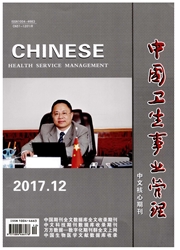

 中文摘要:
中文摘要:
本文以构建民生财政为研究背景,将财政支出分为民生性支出和非民生性支出,在理论考察了民生、财政支出和居民消费三者之间关系的基础上,通过建立政府财政支出与城乡居民消费需求的省级面板数据模型,并运用我国除西藏与重庆之外29个省份1995~2007年的经验数据进行实证检验。结果表明:民生性支出对城乡居民消费具有显著的挤入效应,非民生性支出对城镇居民消费产生挤入效应,对农村居民消费的影响效应则截然相反,但就现阶段而言,非民生性支出和城乡居民消费需求的相关关系并不显著。
 英文摘要:
英文摘要:
Based on the research background of constructing the finance of the people's livelihood, financial expenditure are divided into people's livelihood expenditure and non-people's livelihood expenditure in this paper first; Secondly, the article has theoretically investigated the relationship of the people's livelihood, financial expenditure and consumption demand; In the end, the paper establishes the provincial-level panel data model between the government's financial expenditure and consumption demand of urban and rural residents, and uses the empirical data of China's 29 provinces except Xizang and Chongqing from 1995 to2007 to test: People's living expenditure has a significant positive effect on the consumption demand of urban and rural residents; Non-people's livelihood expenditure has a positive effect on the consumption demand of urban residents, however, it hasa opposite effect on the consumption demand of rural residents. But correlation between non-people's livelihood expenditure and the consumption demand of residents is not conspicuous at this stage in the China.
 同期刊论文项目
同期刊论文项目
 同项目期刊论文
同项目期刊论文
 期刊信息
期刊信息
